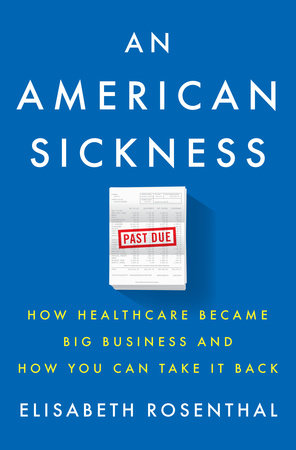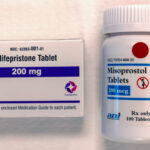The worst thing about the American health care system may be the flagrant misuse of the word “system” to describe a rickety, jury-rigged, indefensibly dangerous machine, tragically underpowered to deliver its product. The best thing may be the quantity of fine critical journalism which, like all spectacular disasters, it has inspired.

BOOK REVIEW — “An American Sickness: How Healthcare Became Big Business and How You Can Take It Back,” by Elisabeth Rosenthal (Penguin Press, 392 pages).
Preeminent among these investigations have been those of Elisabeth Rosenthal, whose New York Times series on health care costs (“Paying Till It Hurts”) calmly followed the money fueling the world’s most expensive and stunningly mediocre health care. Rosenthal’s new book revisits the same territory with new reporting but, distressingly, an unchanged bottom line.
That conclusion is simply stated: “In the past quarter century,” she writes, “the American medical system has stopped focusing on health care or even science. Instead it attends more or less single-mindedly to its own profits.”
And those are impressive profits indeed: The business of health care is booming. Armies of workers contribute their medical, financial, pharmaceutical, digital, and entrepreneurial expertise. Rosenthal, though, is not among them: A physician who left the practice of medicine for journalism decades ago, she is now editor in chief of Kaiser Health News, and writes from perhaps the best possible vantage point on the subject, with an insider’s understanding but none of the judgment-clouding loyalties and prejudices. Clear-eyed, she lays out one incontrovertible truth after another.
Some will be familiar to readers, although like any good horror story they never get old in the telling. Sick Americans, whether they are inpatients or outpatients, plunge immediately into a marketplace laden with ridiculously overpriced goods and services, from that iconic $17 tablet of Tylenol delivered to the hospital bedside in a little plastic cup to the 10-minute sessions with hospital consultants billed at hundreds of dollars and the routine surgical procedures billed at tens of thousands. Virtually any item Americans buy for medical purposes is marked up by a series of middlemen to a final exorbitant charge.
As patients wander the health marketplace, their indecipherable, error-ridden, minutely-itemized bills accumulate. In the background lurk hostile collection agencies threatening the possibility of health care-related bankruptcy. (Out in the metaphorical parking lot, of course, are the signs pointing to Canada, Europe, and All Points East for better options.)
Meanwhile, in charge of dispensing the goods and ringing us up at checkout are our for-profit insurers in all their many guises. They approve of some things, they disapprove of others, they pay or they don’t. Even nonprofit Medicare and Medicaid now contract out services to some of these companies, whose first responsibility is to their shareholders and their profits. Their many tangled plans and sub-plans have providers bouncing on and off their rosters at warp speed, destroying continuity of care and leaving the dreaded “out of network” charges behind. Likewise, medications flit on and off approved drug lists, their presence or absence depending on continual renegotiations between insurer and manufacturer.
Propping it all up is a culture of rampant overtesting and overprescribing for minor and major ills alike. Pretty much no one ever considers doing nothing for a medical condition anymore, even for the ones everyone knows will heal themselves.
The central, impossibly bizarre fact that Rosenthal repeatedly demonstrates is that, at least in the huge corporate networks that have subsumed most American health care, no one on the front lines knows how much any of it costs. Think HealthCare Macy’s without the price tags (but with the cashiers). The doctors whose orders generate the bills are probably least enlightened of all — not necessarily out of intransigence on our part (though few of us are explicitly trained to think about cost). Rather, it is the fact that these costs are simply unknowable — like Schrödinger’s cat, they exist in multiple iterations at once. Every health care system’s price list for services provided is top secret, is likely to be inconsistent with the list of the network down the street, is based on canny ongoing confidential negotiation, and is often infinitely malleable.
Rosenthal interviews a man with severe arthritis whose bill for a state-of-the-art monthly intravenous treatment jumped from $19,000 to $132,791 per infusion when his doctor left one hospital and re-affiliated with another one exactly 15 city blocks away. His insurer paid without comment. (Or, more precisely, the premiums of his fellow insured covered his bill.) Another of Rosenthal’s sources reports negotiating with an insurer for an uncovered service: The sum demanded was $10,000, but when the patient offered the contents of her health savings account, $1,778, the reply was “We’ll take it!” and that was that.
In contrast to ordinary markets, where competition lowers prices, competition has only raised health care prices toward an apparently limitless ceiling. Even the oldest, most basic items, like venerable antibiotics and heart drugs, are newly pricey — and that’s if those who need them are lucky, as sometimes the drugs are just newly unavailable. Some old pills get a new coating, a few new patents, and a high new price; others get purchased by a venture pharmaceutical firm and remarketed unchanged save for that high new price. Prescription insurance, along with all those patient-friendly discount coupons and co-pay reimbursements, may disguise these costs, but they just resurface in the soaring cost of insurance.
And “system” isn’t the only misused word in our health care system; “care” is, sadly, following close behind. No group of caretakers has declined to participate in this competition for dollars, certainly not the individual doctors who have figured out their own ways of profiteering, nor their professional associations, which happily extract their own large fractions. Disease advocacy groups are often bankrolled by the relevant pharmaceutical companies — assuming the groups stay “on message” about expensive new treatment options. Furthest away from their initial benevolent mission are, perhaps, the “nonprofit” hospitals who funnel their large, yes, profits into glitzy physical plants and “competitive” executive salaries in order to retain their tax status.
And what about “health”? Our country performs at mediocre levels in most international measures of that commodity, from infant mortality all the way to longevity. These statistics should not erase our pride in the wonderful care that individual patients can still receive in American hospitals and clinics — good things do happen. But they happen to lucky people, and luck should really not factor into these calculations.
It doesn’t have to be this way, and Rosenthal supplies a hefty list of suggested solutions. On a policy level, they’re not difficult to endorse: Every other developed country has found one, ranging from national single-payer insurance to carefully regulated nonprofit private insurers.
Unfortunately, the measures Rosenthal suggests for anxious readers to take on their own are less convincing. She urges patients to militantly defend their rights, to question all decisions made on their behalf, and to stand firm for reasonable resolutions to all problems. She even supplies templates for writing letters of protest to hospitals and insurers.
These are nice ideas. But sick people and their worried proxies are particularly undersupplied with the energy and psychic fortitude to challenge the system. Meanwhile, voters have so far declined to endorse legislators who might do so effectively. Healthy people have so many pleasanter things to think about.
We are left with only one marginally comforting certainty: At some point most of those who defend our present system will inevitably have to struggle through it themselves, or watch their nearest and dearest do so. Perhaps an accumulation of firsthand experience with the new misnomers of health care will accomplish what all the stories and statistics have failed at, and launch some meaningful reform.
Abigail Zuger is a physician in New York City and a longtime contributor to the science section of The New York Times.











Comments are automatically closed one year after article publication. Archived comments are below.
The traditional American motto: Profits first, last, & always is killing thousands of patients annually as Big Pharma regularly discontinues manufacturing essential, often cheap drugs because they are not profitable. My wife is sick and en route to meet her maker far ahead of schedule because one large firm stopped making INTERFERON aLPHA 2B because it was deemed to be unprofitable, therefore no longer worth manufacturing. I thank God daily that I do not live in the good old U S of A(holes).
Again I say as loud as I can “there is a reason preventable medical error is now the 3rd leading cause of death. ” Health care systems are now owned and operated by corporate giants with profit being their driving force. Healthcare moved from a primary focus of healing and doing what is right to a focus of money making. Caring for the sick and injured does not prosper in an environment of the cut throat fear driven cooperate world. The change has been insidious resulting in hospitals becoming unsafe for the vulnerable who must place their lives in the trust of too often malignant systems with complex mechanisms dedicated to covering up. Providers still enter their professions committed to delivering truly superior healthcare . Tragically, this commitment falls victim to greed.